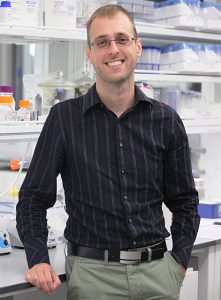
Our Scientific Goals
Quantitative mass spectrometry (MS) at single-cell and micro-region scales to study the biomolecular mechanisms of development, brain function, aging, and addiction.
What we are known for
Turning tiny samples into reproducible results.
Coupling precise sampling to high-sensitivity high-resolution MS to connect molecules to mechanism.
Measuring and analyzing proteins, peptides, and metabolites from small tissue biopsies, identified single cells (neurons), and subcellular sites in living systems.
Our scientific foci
How cell fate is set and rewired in vertebrate embryos.
How neural circuits mature, adapt, and decline.
Where proteome and metabolome control points sit relative to genes and behavior.
Why this matters
Transcript profiles alone miss key regulators. Protein and metabolite states, measured at the right place and time, reveal upstream levers for tissue patterning, synaptic function, and circuit resilience. Those levers point to testable interventions in health, aging, and substance-use disorders.
How we deliver rigorous data
Targeted sampling in intact (frog) embryos and brain tissue, including single identified cells.
Orthogonal separations with capillary electrophoresis and liquid chromatography MS.
Acquisition strategies tuned for scarce material, from fast single-cell runs to validated multiplexed quantification.
Transparent quality controls, statistics, and independent validation with imaging or physiology when relevant.
Representative capabilities
Single-cell and subcellular proteomics and metabolomics in vivo or in situ.
Micro-region proteomics of small brain nuclei and developing tissues.
Function-linked proteomics in neurons after electrophysiology.
Automation and AI-guided acquisition for throughput and reproducibility.
Training the next generation
We train scientists to think and work natively at the interface of bioanalytical mass spectrometry and biology. Trainees learn to design clean experiments, build and troubleshoot CE–MS and LC–MS pipelines, sample living systems with precision, and analyze data with clear statistics. The goal is independence: graduates can formulate a biological question, choose or invent the right measurement, and deliver results that others can reproduce.
For prospective trainees
Projects pair a clear biological question with measurement innovation. Training spans CE–MS and LC–MS, quantitative design, microdissection and microsampling, and integrative analysis. Success looks like a working pipeline, clean figures, and a publishable result.
For collaborators
We welcome partnerships that benefit from single-cell or micro-region resolution. Typical engagements include method translation to new tissues, targeted assays for defined pathways, and joint studies that combine imaging or physiology with proteomics.
For sponsors
Our research program advances measurement science and applies it to priority biological questions with strong relevance to human health. It emphasizes rigor, scalability, and community standards. It is positioned to deliver generalizable methods, open datasets, and mechanistic insight.
Biological models and systems
Embryonic development in Xenopus (frog) to read early cell-fate decisions and mechanism of embryonic body patterning.
Mammalian brain tissue and identified neurons to link molecules to function in the mouse
Emerging lines in brain aging and addiction to reveal early, actionable molecular change in the mouse and rat.
Get involved
Join the lab
Explore our research
See publications
Directions
We are located in the UMD Biochemistry Building (Bld. Number 092). A parking garage for visitors is located directly in front of the building. See visiting instructions here.
For shipping, our delivery address is: Chemistry Building Room 0203, 8051 Regents Dr., University of Maryland College Park, College Park, MD 20742
